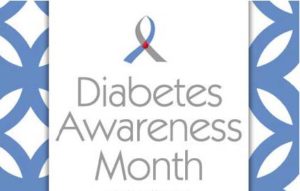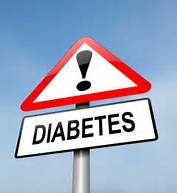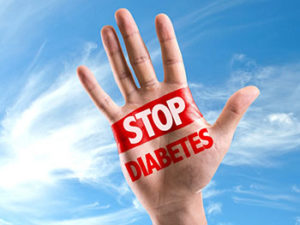 Diabetes is a chronic disease that affects how your body turns food into energy. Most of the food you eat is broken down into sugar (glucose) and released into your bloodstream. Your pancreas makes a hormone called insulin, which acts like a key to let the blood sugar into your body’s cells for use as energy.
Diabetes is a chronic disease that affects how your body turns food into energy. Most of the food you eat is broken down into sugar (glucose) and released into your bloodstream. Your pancreas makes a hormone called insulin, which acts like a key to let the blood sugar into your body’s cells for use as energy.
If you have diabetes, your body either doesn’t make enough insulin or can’t use the insulin it makes as well as it should. When there isn’t enough insulin, too much blood sugar stays in your bloodstream, which over time can cause serious health problems, such as heart disease, vision loss, and kidney disease.
There isn’t a cure yet for diabetes, but healthy lifestyle habits, taking medicine as needed, getting diabetes self-management education, and keeping appointments with your health care team can greatly reduce its impact on your life.
Fast Facts:
- 3 million U.S. adults have diabetes, and 1 in 4 of them don’t know they have it.
- More than 84 million U.S. adults—over a third—have prediabetes, and 90% of them don’t know they have it.
- Diabetes is the seventh leading cause of death in the U.S.
- Diabetes is the number 1 cause of kidney failure, lower-limb amputations, and adult-onset blindness.
- In the last 20 years, the number of adults diagnosed with diabetes has more than tripled as the American population has aged and become more overweight or obese.
Risk Factors:
- You’re at risk for developing prediabetes or type 2 diabetes if you:
- Are overweight
- Are age 45 or older
- Have a parent, brother, or sister with type 2 diabetes
- Are physically active less than 3 times a week
- Have ever had gestational diabetes (diabetes while pregnant) or given birth to a baby weighing more than 9 pounds
- African Americans, Hispanic/Latino Americans, American Indians/Alaska Natives, Pacific Islanders, and some Asian Americans are at higher risk for prediabetes and type 2 diabetes.
- Type 1 diabetes is thought to be caused by an immune reaction (the body attacks itself by mistake). Known risk factors for type 1 diabetes include:
- Family history (having a parent, brother, sister with type 1 diabetes)
- Age (it’s more likely to develop in children, teens, and young adults)
- You’re at risk for developing gestational diabetes if you:
Preventing Type 2 Diabetes:
If you have prediabetes, losing a small amount of weight if you’re overweight and getting regular physical activity can lower your risk for developing type 2 diabetes. A small amount of weight loss means around 5% to 7% of your body weight – just 10 to 14 pounds for a 200-pound person. Regular physical activity means getting at least 150 minutes a week of brisk walking or a similar activity. That’s just 30 minutes a day, five days a week.
For more information about diabetes and resources for preventing or delaying type 2 diabetes, visit the Centers for Disease Control and Prevention website.


